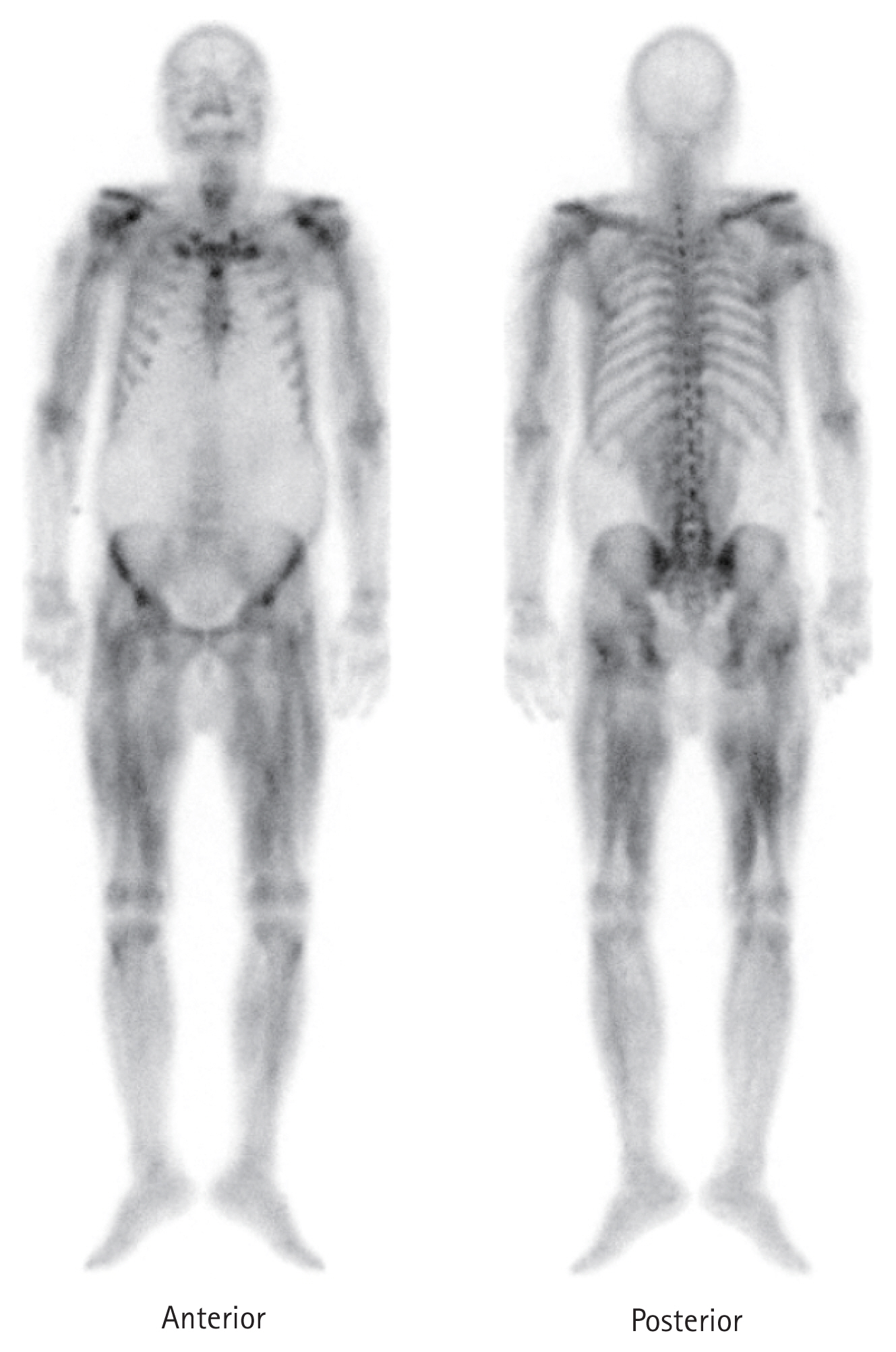 |
 |
| Korean J Intern Med > Volume 39(2); 2024 > Article |
|
A 63-year-old male on hemodialysis, presented to the emergency department with bilateral thigh pain and weakness. He had been taking pregabalin 50mg once daily for uremic pruritus at the local dialysis center. He recently visited the dermatology clinic for worsening symptoms and added 75mg of pregabalin to his daily dose, for a total of 125 mg per day. After three days, he developed bilateral thigh tenderness and weakness. Laboratory findings showed elevated levels of creatinine kinase at 17,036 U/L (reference range: 5–217 U/L) and myoglobin > 20,000 ng/mL (reference range: 3–110 ng/mL). To assess the extent of muscle damage, the 99mTc-DPD bone scintigraphy was performed and revealed that diffuse muscular tracer uptake on bilateral upper extremities and thighs (Fig. 1), suggesting rhabdomyolysis. Daily hemodialysis with a medium cut-off membrane was performed for one week to relieve symptoms. His lower extremity pain and weakness gradually improved and creatinine kinase and myoglobin levels dropped over 194 U/L and 659.8 ng/mL, respectively.
The mechanism of pregabalin-induced myopathy is uncertain. Pregabalin is a gamma-aminobutyric acid analogue used for neuropathic pain. It acts in the central nervous system by binding to the alpha2-delta subunit of voltage-dependent calcium channels. Plasma concentration of pregabalin is reached in approximately 24–48 hours, and 98% is eliminated by the kidney. In this case, the patient had been taking rosuvastatin 20 mg daily for a long time without any adverse effects. Concomitant use of drugs that inhibit cytochrome P450 and statins is known to increase the risk of rhabdomyolysis. However, as pregabalin does not inhibit cytochrome P450, the likelihood of statin-induced rhabdomyolysis is considered low. This case suggests that pregabalin should be used with caution in patients on hemodialysis as they are at increased risk of overdose, although it has been reported that up to 60% of pregabalin is removed by hemodialysis.
-
METRICS

-
- 1 Crossref
- 0 Scopus
- 213 View
- 294 Download
- Related articles
-
Gemcitabine-induced myositis in a diabetes mellitus patient on hemodialysis2017 September;32(5)
An Overlooked Cause of Impaired Consciousness in a Hemodialysis Patient2012 September;27(3)
An Outbreak of Heinz Body Positive Hemolytic Anemia in Chronic Hemodialysis Patients1993 July;8(2)




 PDF Links
PDF Links PubReader
PubReader ePub Link
ePub Link Full text via DOI
Full text via DOI Download Citation
Download Citation Print
Print


